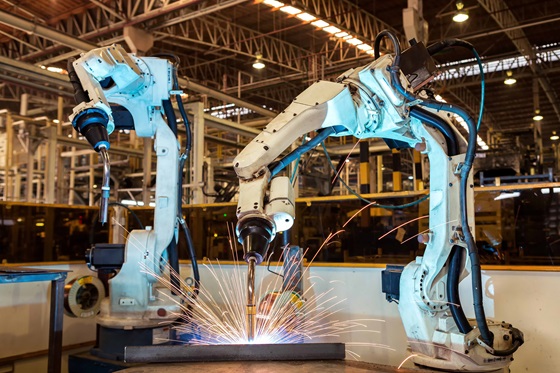Most of Finland’s robotics industry specializes in automation for small-series production – in line with a growing global manufacturing focus – according to a new report from HowToRobot in collaboration with the Robotics Society in Finland.
Getting robots to work in a manufacturing environment with many variations and small production series can prove challenging. Yet, this is precisely what the robotics industry in Finland has specialized in.
74% of the robotics industry in Finland supplies to the metal and machinery manufacturing industry – often characterized by high-mix low-volume production (HMLV). This is one of the main findings from the new market overview of robot and automation companies, covering research on 201 businesses across 315 locations in Finland.
“Finland’s robotics industry is working on an issue that manufacturers recognize worldwide: How can you make automation possible and feasible in a small production with many variations,” says Søren Peters, CEO of HowToRobot.
Labor issues driving robotization in Finland
The Finnish expertise in robotics has developed out of necessity to support the country’s large machinery manufacturing industry according to Jyrki Latokartano, Chairman of the Robotics Society in Finland.
Over the past 15 years, labor costs in manufacturing in Finland have increased by more than 30% according to Statistics Finland. Also, the number of job vacancies for metal and machinery workers reached record levels in 2022, up 826% since 2009.
“Getting robots to help make heavy machinery is necessary because of the growing labor costs and lack of people, for example, skilled in arc welding,” says Jyrki Latokartano.
24% of robotics companies in Finland specialize in welding automation according to the market report, which also identified a range of other automation applications often seen in the machinery industry: machining, assembly, quality control, and many others.
Low-hanging fruit in new sectors
Despite the machinery industry’s strong influence on robotics in Finland, automation providers are also expanding to other areas, such as logistics, according to the report. 34% of suppliers specialize in logistics automation solutions, used in a wide range of industries.
“There is growing potential for automating internal logistics across healthcare, manufacturing, and retail sectors. In many of these areas, businesses are not used to robots,” says Jyrki Latokartano.

Increasing robot adoption in these new areas requires a strong commercial focus from robotics companies according to Søren Peters. This means, among other things, communicating the technology in a language for non-experts:
“If you’re new to robotics, you’re just more likely to invest in solutions that are easy to understand and use,” he concludes.
Highlights from the report
The ‘2023 Market Overview of Robot and Automation Companies in Finland’ is based on research conducted by HowToRobot.com in collaboration with the Robotics Society in Finland. Some of the key findings include:
- The robotics industry in Finland includes 201 suppliers; among these, 136 integrators, 47 sub-component suppliers, 10 robot manufacturers, 4 advisors, and 4 distributors.
- The top industries served by most robotics suppliers includerobotics (151 suppliers), metal & machinery (148 suppliers), and logistics (95 suppliers).
- The top applications that most robotics suppliers specialize in arehandling & picking (104 suppliers), inspection & quality control (83 suppliers), and logistics & storage (68 suppliers).
The full report contains insights about the market for robotics and automation in Finland, statistics on robotics companies, and a complete data sheet containing every supplier identified in the research. The report is available at HowToRobot.com.



